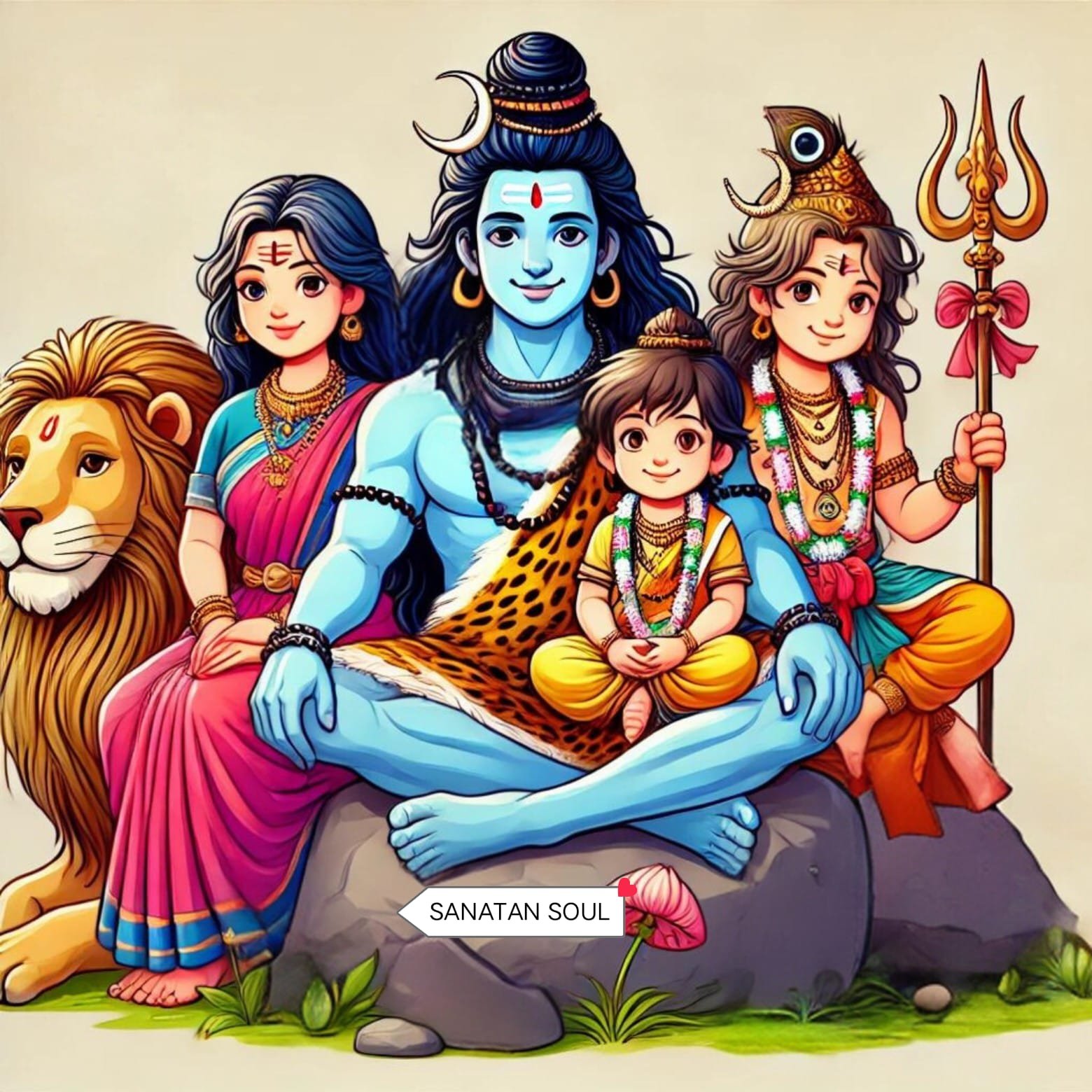Shiva and Parvati - A tale of Eternal love and power
1. The Divine Union of Shiva and Parvati

The love between Shiva and Parvati is often described as pure and ethereal. It goes beyond societal norms and expectations, as Shiva, the austere ascetic, finds solace and completeness in Parvati’s devotion and love. Despite her mother’s objections and societal norms and pressures, Parvati’s unwavering commitment to Shiva exemplifies unconditional love.
2. The origin of Shiva : the aesthetic lord

Even after, Shiva being the representation of destruction embodies sacrifice attachment, external love, jealousy, cold feelings, desire, etc. Shiva quotes or adorns a crescent shape of the moon on his matted and shriveled hair, with River Ganga gently caressing his head. Vasuki, revolving around the neck and trident established in his hand. After the demise of his first wife, Sati, Shiva was devasted and decided to keep himself engrossed in deep meditation and somewhere away from civilization.
3. The blossoming flower, Parvati

Maa Sati, the consort of Shiva in the erstwhile era, was reincarnated as Maa Parvati, the daughter of King Himavan and Queen Maina. Narad Muni was called to check the little girl’s horoscope. Narad said,” Everything is fantastic about this girl but She will be married to an Aghori”. The parents grew worried that their beautiful and erudite daughter would be married to an Aghori, but they were convinced for the welfare of the world. What welfare?? Meanwhile, Tarakasura was a powerful demon who received a boon from Lord Brahma that made him nearly invincible and he could be only killed by the son of Shiva.
4. Parvati's Penances and Shiva's Asceticism

Parvati was devoted to lord Shiva from her babyhood only and to win Shiva’s heart, she had started mediating from her babyhood only. She had renounced all the comforts and luxuries and started meditating deeply in harsh conditions and climate of Himalya. Finally, her devotion left Mahadev moved with grace and love for her in his heart.
5. The Divine Marriage: Essence of Joy and Laughter

Marriage was arranged. The groom’s side began weaving the function of the procession. The Devas decided to go to the bride’s place by dividing themselves into groups. First reached the group of Vishnu. By looking at his divine beauty and celestial glow, the bride’s side thought that he was the groom. But, Vishnu said,” No, I am not the groom. Groom is coming behind”. Then, reached the group of Brahma. Because of his majestic appearance and celestial beauty, the bride’s side again mistook and perceived him as the groom. But Brahma said,” No, No I am the groom. Groom is coming behind”.
Then, approached the group of Shiva. It consisted of all the bhoot, prets. Shiva’s look was as follows:- over his matted hair there rested a snake as his crown, his earrings were made up of the coiled snake, around his neck their lies Vasuki, his arms were decorated with snakes, he was wearing tiger skin, whole body covered with ashes, sitting opposite on his vahana, Nandi.
6. Shiva's endeavouring welcome
Maina was standing outside the entrance with a Kamandalu filled with water and with a diya. But what a Kamandalu with water will mean to the one who adores Ganga in his jata? What will a diya mean to the one who has Chandrama on his head? However, when Maina saw her son–in–law, She fainted. When She woke up, She said,” It is okay for me that my daughter will remain unmarried but I will not give her hand to Shiva”. But she had to agree to the proposal of marriage at the urging of all the Devas.
7. The Family of Shiva and Parvati

Shiva’s family, often depicted with divine charm and grace, consists of his wife Parvati, and their two sons, Ganesha and Kartikeya. Parvati, the goddess of love and courage is Shiva’s devoted and robust wife. Ganesha, the elephant-headed god, is revered as the remover of obstacles or hurdles and the lord of beginnings. Kartikeya, also known as Skanda or Murugan, is the god of war and victory. This divine family is a symbol of balance and unity, each member carries unique qualities and attributes that complement and complete their celestial household. The family of Shiva teaches us the importance of balance and harmony, devotion and duty, challenges and love, sacrifice and compassion, and transformation and renewal.
8. Lessons from the Union of Mahadev and Parvati
Mahadev’s teaching does include the unconventional death and cycle of existence. He states about the momentary pleasure of everything, which in today’s omnipresent world is understood by a very few of us. The prestige, property, self-respect, and wealth would be reduced to dust and all of us would lie empty-handed on the cremation ground. The only thing permanent that would remain forever’ is our good deeds and it would even help us in getting liberation. all the dormancy and die. Parvati’s teaching does include the loyalty, a partnership should have. She teaches us the devotion in which one can get bliss even without physical touching. Her selfless love even after marrying an aesthetic shows one need not be royal but should be loyal. She encompasses multiple teachings and gives warmth to all of us.
9. The end of story
Did you see that love doesn’t only contain the essence of romance, but love is a divine feeling that happens when you can feel the presence of each other even in moving air? The compassion and urge of Parvati to only having Shiva as her husband resembles the covalent bonding one should have.
